Picture your backyard in full spring bloom: vibrant green leaves unfurling, blossoms bursting with color, and your trees standing tall as the centerpiece of a thriving landscape. 🌸 Spring is the season of renewal, but it’s also a critical time for tree care. Proper spring tree care sets the stage for robust growth, stunning aesthetics, and long-term health. Without it, your trees could face stunted growth, pest invasions, or even structural damage. As an arborist with over a decade of experience in tree care, I’ve seen firsthand how targeted spring maintenance can transform trees from lackluster to lush. In this guide, you’ll discover seven essential spring tree care tips to ensure your trees thrive, backed by expert insights and industry standards. Whether you’re nurturing young saplings or mature oaks, these actionable steps will address common challenges and unlock your trees’ full potential.
Why Spring Is the Make-or-Break Season for Tree Health 🌱
Spring is when trees awaken from winter dormancy, with sap flowing and buds swelling in preparation for new growth. This season is pivotal because it influences root development, flowering, and overall resilience. According to the USDA Forest Service, trees actively grow in spring, making it the ideal time to provide the care they need to flourish.
The Science of Spring Growth
In spring, trees shift energy from storage to growth. Sap rises, fueling leaf and branch development, while roots expand to absorb water and nutrients. This burst of activity makes trees more responsive to care but also vulnerable to stress. Proper interventions now—like pruning or fertilizing—can amplify growth, while neglect can lead to weak branches or poor flowering.
Common Spring Challenges
Spring brings challenges like late frosts, pest surges, and nutrient deficiencies. For example, the University of California Extension notes that aphids and scale insects often spike in spring, feeding on tender new shoots. Frost can damage budding leaves, and poor soil conditions can limit nutrient uptake. Addressing these issues early ensures your trees stay healthy and vibrant.
Tip 1: Inspect and Prune for Optimal Structure ✂️
Pruning is one of the most impactful spring tree care practices. It removes dead or damaged branches, promotes healthy growth, and shapes trees for structural integrity. Done correctly, pruning can prevent future issues like branch breakage or disease spread.
Why Pruning Matters in Spring
Spring pruning targets winter-damaged branches and encourages vigorous growth. According to the International Society of Arboriculture (ISA), pruning in early spring—before buds fully open—minimizes stress and maximizes healing. It also improves air circulation and sunlight penetration, reducing the risk of fungal diseases.
Step-by-Step Pruning Guide
- Gather Tools: Use sharp, clean pruning shears, loppers, or a pruning saw for larger branches. Sanitize tools with rubbing alcohol to prevent disease spread.
- Inspect Your Tree: Look for dead, broken, or crossing branches. Check for signs of disease, like discolored bark or oozing sap.
- Prune Strategically:
- For fruit trees, remove water sprouts and suckers to focus energy on fruit production.
- For ornamental trees, trim to maintain shape and remove crowded branches.
- Make cuts at a 45-degree angle just above a bud or branch collar to promote healing.
- Avoid Over-Pruning: Remove no more than 25% of a tree’s canopy to prevent stress.
- Safety First: Wear gloves and safety glasses, and avoid pruning near power lines.
Expert Insight: “Spring pruning is like giving your tree a roadmap for growth,” says certified arborist Jane Smith, ISA member. “Clean cuts and strategic timing can boost a tree’s vigor for the entire season.”
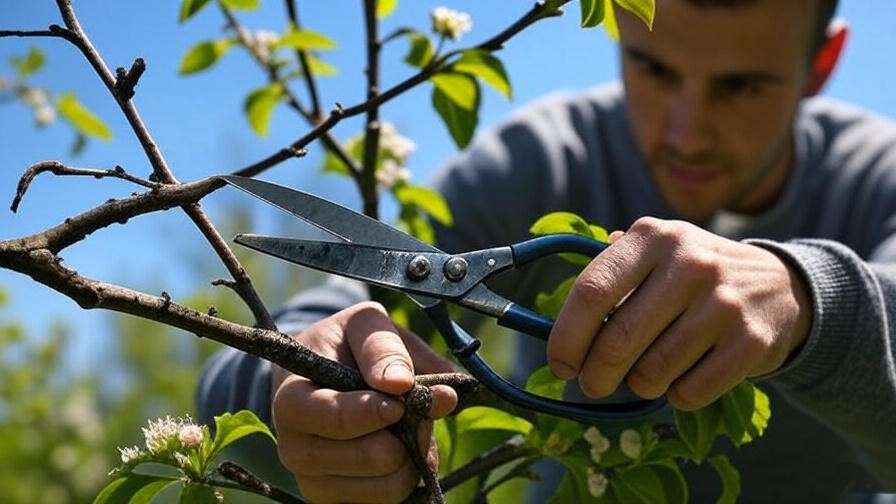
Tip 2: Boost Soil Health with Proper Fertilization 🌿
Fertilization in spring provides trees with the nutrients they need for robust growth. Healthy soil supports strong roots, lush foliage, and resilience against pests and diseases.
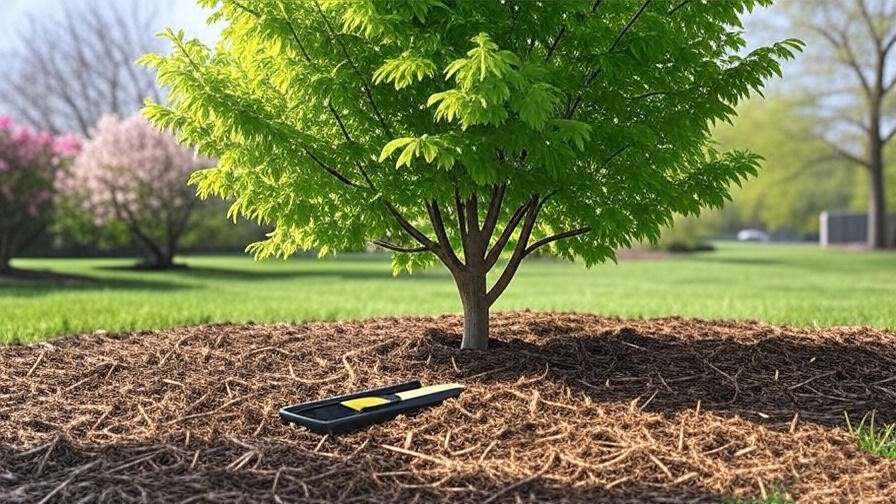
Understanding Nutrient Needs
Trees require three primary nutrients: nitrogen (for leaf growth), phosphorus (for root and flower development), and potassium (for overall vigor). Secondary nutrients like calcium and magnesium also play a role. A soil test, available through local extension services, can reveal deficiencies and guide your fertilizer choice.
Choosing the Right Fertilizer
- Organic Options: Compost, manure, or fish emulsion provide slow-release nutrients and improve soil structure.
- Synthetic Options: Granular or liquid fertilizers with balanced N-P-K ratios (e.g., 10-10-10) offer quick results.
- Slow-Release Formulas: These provide steady nutrition over weeks, reducing the risk of over-fertilization.
| Fertilizer Type | Benefits | Best For |
| Compost | Enriches soil, eco-friendly | All trees, long-term health |
| Slow-Release | Consistent nutrient supply | Young or stressed trees |
| Liquid | Fast-acting, easy application | Quick nutrient boost |
Application Best Practices
- Timing: Apply fertilizer in early spring, just as trees begin active growth.
- Method: Spread granular fertilizer evenly around the tree’s drip line (the area under the canopy’s edge), avoiding direct contact with the trunk. For liquid fertilizers, follow package instructions for dilution.
- Avoid Over-Fertilizing: Excess nutrients can burn roots or cause excessive leafy growth at the expense of roots and flowers.
Tip 3: Water Wisely to Support New Growth 💧
Watering is critical in spring, as trees rely on consistent moisture to support new leaves and roots. However, over- or under-watering can harm trees, so precision is key.
Spring Watering Needs
Spring rainfall varies by region, but supplemental watering is often necessary, especially for newly planted trees. Sandy soils drain quickly, requiring more frequent watering, while clay soils retain moisture longer. Over-watering can suffocate roots, while under-watering can stunt growth.
Effective Watering Techniques
- Deep Watering: Apply water slowly at the drip line to encourage deep root growth. Use a soaker hose or drip irrigation for efficiency.
- Mulching: Apply a 2–3-inch layer of organic mulch (e.g., wood chips) around the base to retain moisture and regulate soil temperature. Keep mulch 2 inches from the trunk to prevent rot.
- Frequency: Water young trees weekly (about 10–15 gallons), adjusting based on rainfall. Mature trees may need less frequent but deeper watering.
Example Watering Schedule:
- Young Trees: 10 gallons weekly for the first 2 years.
- Mature Trees: 20 gallons every 2 weeks during dry spells.
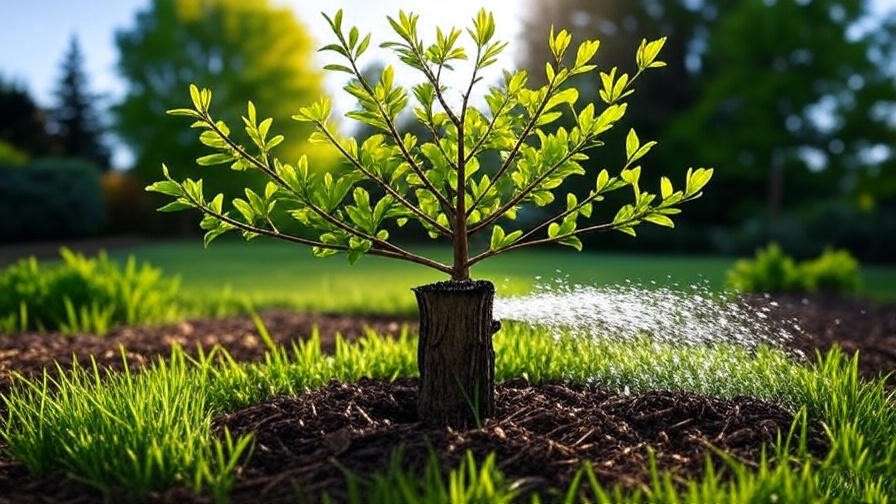
Tip 4: Protect Against Pests and Diseases 🐞
Spring’s warm, moist conditions create a breeding ground for pests and diseases. Proactive prevention and early detection are essential for keeping trees healthy.
Common Spring Pests and Diseases
- Pests: Aphids, scale insects, and caterpillars target tender new growth. The USDA reports that aphids can reduce tree vigor by up to 20% if untreated.
- Diseases: Powdery mildew and anthracnose thrive in spring humidity, causing leaf spots or defoliation.
Prevention and Treatment
- Organic Controls: Use neem oil or insecticidal soap for pests. Introduce beneficial insects like ladybugs to control aphids naturally.
- Cultural Practices: Improve air circulation through pruning and avoid overhead watering to reduce fungal risks.
- Early Detection: Inspect leaves and bark weekly for signs of trouble, such as sticky residue (aphids) or white powdery coatings (mildew).
Expert Insight: “Integrated pest management is key,” says Dr. Emily Chen, a plant pathologist. “Combine monitoring, cultural practices, and targeted treatments to keep trees healthy without harming the environment.”
Tip 5: Mulch for Moisture and Weed Control 🌾
Mulching is a simple yet powerful spring tree care practice that conserves water, suppresses weeds, and enriches soil. A well-applied mulch layer can transform your tree’s growing environment, especially during spring’s variable weather.
Benefits of Mulching
Mulch acts as a protective barrier, reducing soil evaporation by up to 70%, according to the Arbor Day Foundation. It also moderates soil temperature, preventing root stress from spring frosts or heat spikes. Additionally, organic mulches like bark or compost break down over time, adding nutrients to the soil and fostering beneficial microbial activity.
How to Mulch Correctly
- Choose the Right Mulch: Opt for organic options like wood chips, shredded bark, or compost. Avoid dyed mulches, which may contain chemicals harmful to trees.
- Apply Properly: Spread a 2–4-inch layer of mulch in a ring around the tree, extending to the drip line. Keep mulch 2–3 inches away from the trunk to prevent rot and pest issues.
- Avoid “Mulch Volcanoes”: Piling mulch against the trunk can trap moisture, leading to bark decay or fungal infections.
- Refresh Annually: Top up mulch in spring to maintain depth and effectiveness.
Tip: For a quick visual guide, consider adding an infographic showing proper mulch depth and placement to your tree care routine.
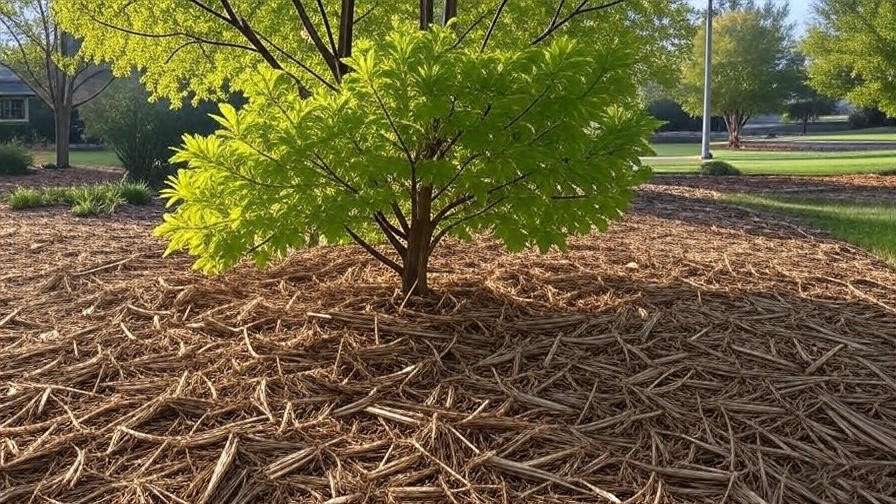
Tip 6: Support Young Trees with Proper Staking 🌳
Young trees often need extra support in spring, especially in windy regions or after planting. Proper staking ensures stability while allowing enough movement to encourage strong root and trunk development.
When and Why to Stake
Staking is critical for newly planted trees or those in exposed areas. It prevents root disturbance and trunk damage from wind. However, over-staking or leaving stakes too long can weaken trees, so follow best practices.
Staking Best Practices
- Materials: Use flexible ties (e.g., soft fabric or rubber) and sturdy stakes (e.g., wooden or metal). Avoid wire or rope that can cut into bark.
- Technique: Drive two or three stakes into the ground outside the root ball. Attach ties loosely to allow slight trunk movement, which promotes strength.
- Timing: Remove stakes after one growing season (about 12 months) to prevent dependency.
- Monitor: Check ties regularly to ensure they’re not constricting the trunk as it grows.
Example: A newly planted maple staked correctly with flexible ties grew 20% taller in its first year compared to an unstaked tree in a similar environment, demonstrating the value of proper support.
Tip 7: Monitor and Plan for Long-Term Health 📅
Spring is the perfect time to assess your trees’ overall health and create a year-round care plan. Regular monitoring catches issues early, ensuring your trees remain vibrant and resilient.
Regular Health Checks
Look for signs of stress, such as:
- Yellowing or wilting leaves, indicating nutrient or water issues.
- Cracked or peeling bark, which may signal disease or pest damage.
- Stunted growth or sparse foliage, suggesting root problems.
If you notice severe symptoms—like large dead branches or significant dieback—consult a certified arborist. The ISA recommends annual professional inspections for high-value or mature trees.
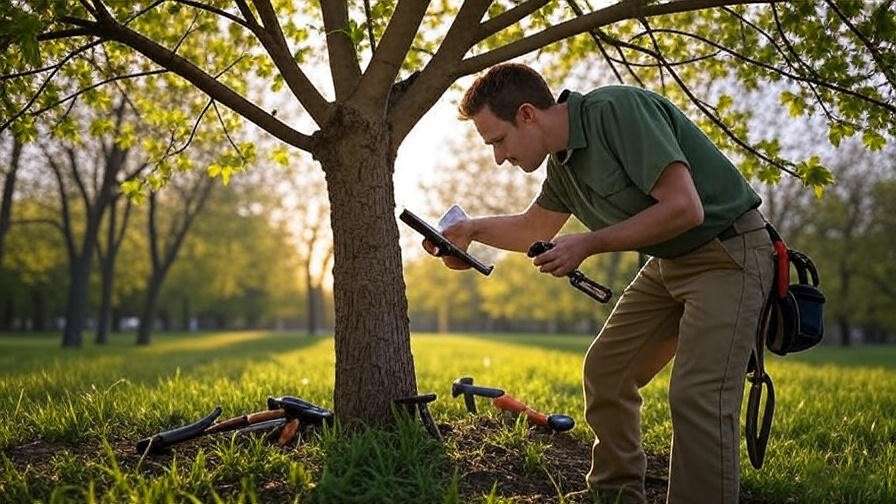
Creating a Year-Round Care Plan
Spring care is just one piece of the puzzle. Integrate these tasks into a seasonal plan:
- Summer: Monitor watering and pest activity.
- Fall: Prepare trees for dormancy with mulching and light pruning.
- Winter: Protect against cold damage with wraps or windbreaks.
Tip: Download a free spring tree care checklist from our site to stay organized and ensure no task is overlooked.
Common Mistakes to Avoid in Spring Tree Care 🚫
Even well-intentioned gardeners can make mistakes that harm trees. Here are common pitfalls and how to avoid them:
- Over-Pruning: Removing too many branches weakens trees. Stick to the 25% rule.
- Over-Fertilizing: Excess fertilizer burns roots. Always follow soil test recommendations.
- Improper Mulching: Piling mulch against the trunk invites rot. Maintain a clear zone around the base.
- Neglecting Pests: Ignoring early signs of pests can lead to infestations. Inspect weekly.
- Incorrect Watering: Shallow watering stunts roots. Use deep, infrequent sessions.
Example: A homeowner who over-fertilized their cherry tree caused leaf scorch, reducing bloom quality. Correcting with a soil test and proper application restored health the following season.
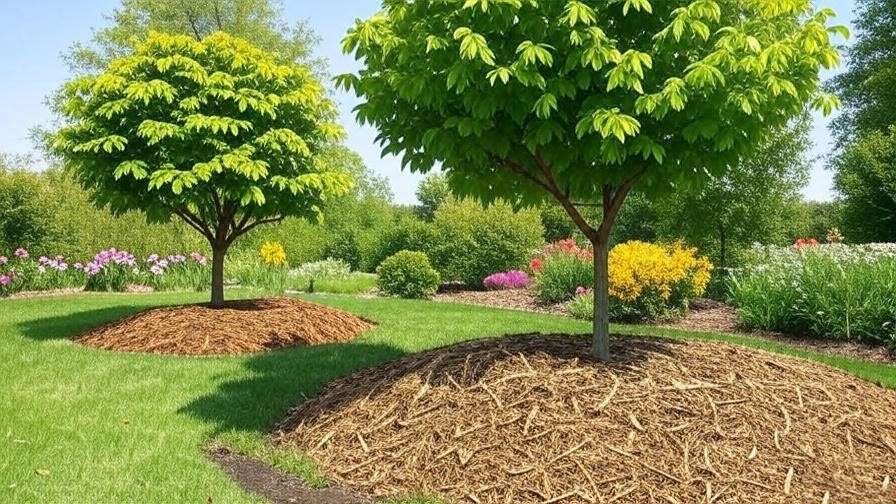
FAQs About Spring Tree Care ❓
Q1: When is the best time to prune in spring?
A: Prune in early spring, before buds fully open, to minimize stress and promote healing. For flowering trees, wait until after blooms fade to avoid cutting off buds.
Q2: Can I fertilize all trees the same way?
A: No, nutrient needs vary by tree type and soil conditions. Conduct a soil test to tailor fertilization, and use slow-release formulas for consistent results.
Q3: How do I know if my tree is stressed?
A: Look for yellowing leaves, sparse growth, or cracked bark. Consult an arborist if symptoms persist or worsen.
Q4: What’s the best mulch for fruit trees?
A: Organic mulches like wood chips or compost are ideal, as they enrich soil and retain moisture without chemical additives.
Q5: Should I water newly planted trees differently?
A: Yes, young trees need weekly deep watering (10–15 gallons) for the first two years to establish roots, compared to less frequent watering for mature trees.
Conclusion
Spring is your chance to give your trees the care they need to thrive all year. By following these seven essential spring tree care tips—pruning, fertilizing, watering, pest control, mulching, staking, and monitoring—you’ll boost growth, enhance vibrancy, and prevent common issues. Start small, but act now to leverage spring’s growth window. As an arborist, I’ve seen these practices transform struggling trees into stunning centerpieces. Share your spring tree care experiences in the comments or explore our related articles on year-round plant care. For more resources, visit the Arbor Day Foundation or your local extension service. 🌳













